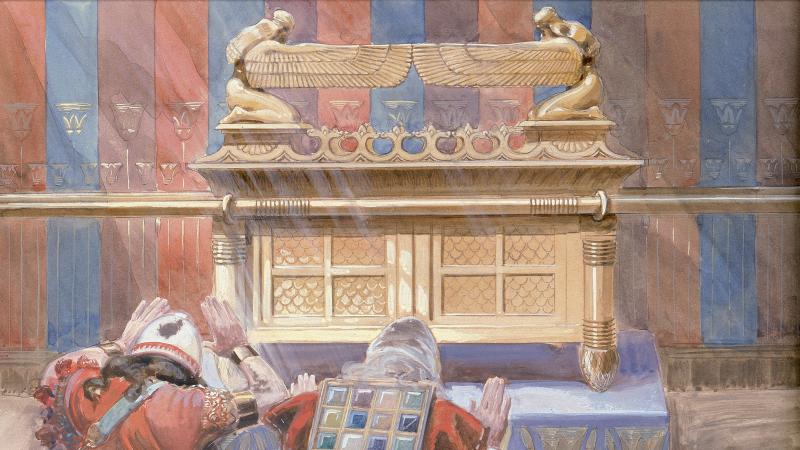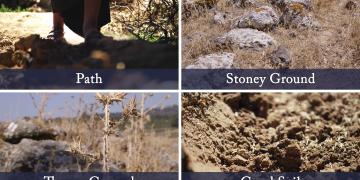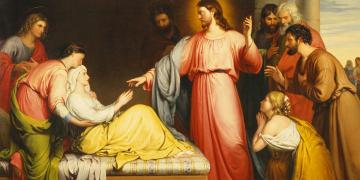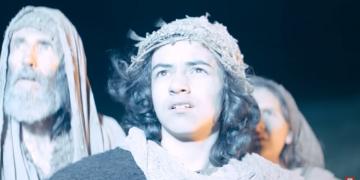You are here
New Video: Finding Christ in the Ark of the Covenant
The Ark of the Covenant is one of the most easily recognized biblical artifacts in modern culture, but how many modern Christians understand the true significance of the Ark and how it teaches us about Jesus Christ? In the newest Messages of Christ video, Daniel Smith powerfully explains the meaning of the Ark’s various elements and how these elements can point us to the Savior, Jesus Christ.
Historical Context
The story of the Ark of the Covenant begins with the prophet Moses. When Moses communed with the Lord on Mount Sinai, he received the stone tablets with the Law, and a covenant was made whereby the worthy could enter God’s presence for one day a year. However, when the children of Israel saw the lightnings and thunderings on the mountaintop, they were afraid and asked Moses if he would instead enter God’s presence on their behalf. The doubt and fear of the Children of Israel led them to reject this sacred opportunity to enter God’s presence, so the Lord commanded the construction of a tabernacle in the wilderness to teach Israel how to return to Him. With rich symbolism in almost every corner—from the altar of sacrifice to the Ark of the Covenant itself—the tabernacle was made to show the children of Israel how to return to God’s presence by demonstrating how to symbolically enter a sacred space through the mediation of God’s appointed high priest.
Physical Description
The Ark itself was a box made from acacia wood, which came from an extremely durable type of tree: Acacia trees were some of the only trees that grew in the harsh desert where the children of Israel wandered for 40 years. This box was then overlaid with gold. Atop the Ark sat the mercy seat: a solid gold lid with two gold cherubim on top. On the Day of Atonement, priests would perform a ritual sacrifice for all of Israel, and, using the blood from that sacrifice, the high priest would then enter the Holy of Holies to sprinkle or “cover” the mercy seat. Importantly, the original word for “atonement” comes from the Hebrew word “kaphar,” which means, “to cover.” Thus, in performing this ritual, the high priest symbolized that it was only through the shedding of sacrificial blood that one could find mercy and enter the presence of God.
Contents of the Ark
Within the Ark sat 3 items which served as constant reminders of God’s covenant with Israel: a bowl of manna, the stone tablets Moses received on Mount Sinai, and the blossomed rod of Aaron. The bowl of manna represented God’s providence, as it reminded the Israelites of the miracle God had wrought in providing daily bread to eat in the desert. The stone tablets themselves contained God’s law and thus symbolized the covenant associated with that law: If Israel would obey God’s laws, He would protect them. The rod of Aaron was to remind Israel of God’s priesthood authority that came only through Aaron, as proved when his was the only staff to blossom after the children of Israel questioned Aaron’s right to be high priest. Perhaps as the most significant feature of all, these three symbolic contents in the Ark were all covered by the mercy seat, symbolizing how God’s mercy can surpass both His law and His justice.
Symbolism of Jesus Christ
While the Ark of the Covenant served Israel as a powerful symbol of God’s providence, mercy, law, and authority, it can also serve us today as a direct symbol of the atonement of the Savior, Jesus Christ. Anciently on the Day of Atonement, the high priest would enter the Holy of Holies and make atonement for the sins of Israel by sprinkling blood from a sacrificial lamb on the mercy seat. Thus, by the shedding of sacrificial blood, Israel could symbolically enter God’s presence. Similarly, through His suffering and death, Jesus Christ shed his own blood and atoned for the sins of mankind, allowing all to return to the presence of the Father. However, while the ritual sacrifice of the Israelites had to be renewed every year, the shedding of the blood of the lamb of God was a permanent sacrifice for the sins of the world. Thus, through the atonement made by our High Priest, Jesus Christ, we ourselves can receive forgiveness for our sins and “come boldly unto the throne of grace,” finding mercy and grace in the presence of God (Hebrews 4:16).
Subscribe
Get the latest updates on Book of Mormon topics and research for free








